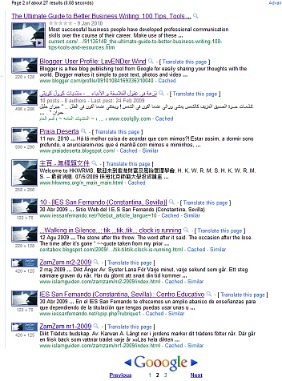Earlier last week Google announced a new reverse image search service. In a similar fashion to other reverse image search engines on the market users can upload images, point to an image URL or even, if a Chrome or Firefox extension is installed, right-click on an image and directly perform the reverse image search. The results should, in principle, return other sites where the image is being used, similar images, and if the algorithm was able to recognize the subject of the image, suggested pages about said subject.
What does this mean for photographers?
One of the major concerns photographers face in the digital age is the unlicensed use of their images. Whether being done by lack of knowledge or knowingly infringing on other people’s copyrights, using unlicensed images is an increasing trend and represents a serious loss of revenue for photographers both amateur and professional.
The commercial need to showcase our images to the masses, whether on photo sharing sites and networks or on our own sites, exposes whole collections to those thinking that “just because it’s available online, it must be freeâ€.
If you’re paranoid enough (not saying it is a bad thing), reverse image search engines permit us to, up to a limited extent, fight back this unwelcome side effect by allowing photographers to find where their images are being used online, albeit generally one by one. After an infringing image is found, the next step is up to the photographer, deciding to ignore it, attempting to license it, using take-down notices, or suing.
The concept is not new and there are several services on the market doing exactly the same thing, raging from free (e.g. TinEye) to very well paid (e.g. PicScout). Some services even allow you to upload your whole collection and, periodically, they’ll screen the web and report on any findings. Some large stock agencies are widely known for using these large scale services and aggressively pursuing infringers.
With the Orphan Works legislation (that I seem never to know if it has been approved or not, with all their back and forward), reverse image search provides another strong method for a photographer’s identity as author of an image to be established. Many would probably agree that this is the most important function reverse image search can have for photographers.
First impressions of Google’s reverse image search
The service seemed to become fully functional for me through a Chrome extension even before the roll-out at images.google.com. When you read this, I’m sure that the roll-out will be complete.
 To test how good it was finding image use on the web, I tried it first with some images that I know to have limited stock value and, as expected, besides my own sites, weren’t found anywhere else. This totally changed with more conceptual images – Google was able to find them in many different sites, unlicensed, and of which I was not aware of. On the left you can see an example of a results page. This image was found 27 times, 21 of them unlicensed use.
To test how good it was finding image use on the web, I tried it first with some images that I know to have limited stock value and, as expected, besides my own sites, weren’t found anywhere else. This totally changed with more conceptual images – Google was able to find them in many different sites, unlicensed, and of which I was not aware of. On the left you can see an example of a results page. This image was found 27 times, 21 of them unlicensed use.
The results with the similar images feature was not as good. One of the uses of similar image search can be to find derivative images, and it did not find some derivative work using my images I know to be around. At most, it was able to find images with similar color tonalities or similar patterns. This is probably the feature that needs more development in this service, but it is also the most difficult to do well.
The service is very very fast. Also surprising was its ability to recognize some of the subjects and point me to sites where I could read more about them (Wikipedia mostly).
In general, this service is very useful, easy and fast. It can be another tool for photographers to use against copyright infringers, but it can also turn into an immense and depressive waste of time. If you’re prone to paranoia, use in moderation.
If you want another first impression of this service, David Sanger has a very nice write up on this.
In the next days I’ll write my comparison between Google and TinEye when it comes to usability and results.
What do you think of this service? Have you tried it? Do you think it will be any useful? Share your thoughts in the comments below.
Eldar
October 30, 2011 at 12:42 am
Quite useful service
Stephen
May 8, 2012 at 4:53 pm
I just entered one of my images and found ten pages of results. This is somewhat disheartening as web use is one of my most common licenses and most of the people using the image didn’t even bother to credit the source.
Given that it’s been a while since you posted this, how have you followed up and what were the outcomes?